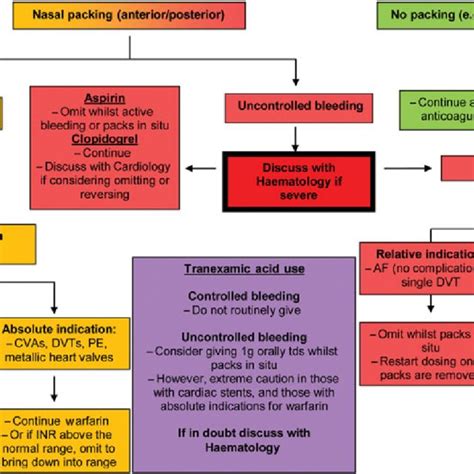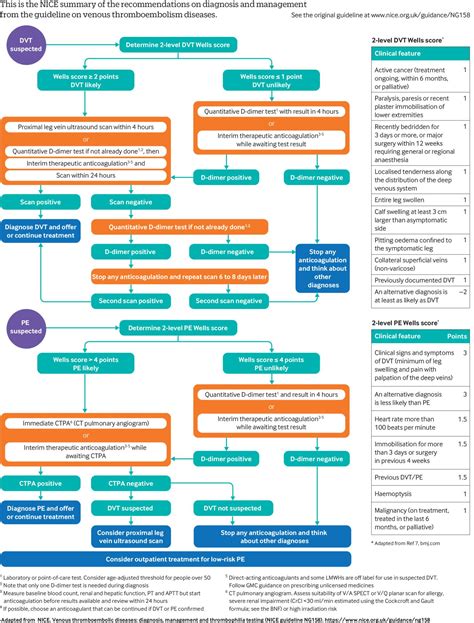lv thrombus anticoagulation guidelines | lv thrombus prophylaxis guidelines lv thrombus anticoagulation guidelines ¢= @bp ‹ d©Y©_!@»ƒ¬ø˜lêf¶×Gb3æ unyKÒÙr® ƒ ¾îãI¾˜^ . Raksti - flyfishingteam.lv. Sacensības. 2023. gada LČ 2. posms. Posted on 29-06-2023 by r1de. 2023. gada Latvijas čempionāta mušiņmakšķerēšanā 2. posms 22. – 23. jūlijā Gaujā pie Līgatnes.. Sacensības. 2023. gada LČ 1. posma programma. Posted on 04-04-2023 by r1de.
0 · lv thrombus treatment guidelines nhs
1 · lv thrombus prophylaxis guidelines
2 · lv thrombus prevention guidelines
3 · lv thrombus duration of anticoagulation
4 · lv mural thrombus treatment guidelines
5 · left ventricular thrombus patient education
6 · doac vs warfarin lv thrombus
7 · chest guidelines lv thrombus
Matisse: The Red Studio The Fondation, in collaboration with The Museum of Modern Art (MoMA), New York and the SMK - Statens Museum for Kunst, Copenhagen (National Gallery of Denmark) - is hosting the exhibition “Matisse: The Red Studio”, focusing on the genesis and history of this famous 1911 masterpiece, one of MoMA’s iconic works since .

The consensus of this writing group, which is based on retrospective registry data and small, prospective observational studies, is for anticoagulation (VKA or DOAC) in patients with LV thrombus in the setting of DCM for at least 3 to 6 months, with discontinuation if LVEF .¢= @bp ‹ d©Y©_!@»ƒ¬ø˜lêf¶×Gb3æ unyKÒÙr® ƒ ¾îãI¾˜^ .We would like to show you a description here but the site won’t allow us.¢= @bp ‹ d©Y©_!@»ƒ¬ø˜lêf¶×Gb3æ unyKÒÙr® ƒ ¾îãI¾˜^ .
Left ventricular (LV) thrombus formation is a well‐known complication in the course of .Comments and feedback on AHA/ASA Scientific Statements and Guidelines .We sought to determine whether an association existed between the . On the basis of limited data, patients with nonischemic cardiomyopathy with LV thrombus should be treated with OAC for at least 3–6 months, with discontinuation if LV .
Clinical practice guidelines from the American Heart Association recommend consideration of prophylactic anticoagulation to prevent left ventricular thrombus (LVT) formation in patients with anterior ST-elevation . This article reviews the epidemiology, pathophysiology, diagnosis, and management of left ventricular thrombus after myocardial infarction. It also provides .
lv thrombus treatment guidelines nhs
Mechanistically, LV thrombus development depends on Virchow’s triad (ie, endothelial injury from myocardial infarction, blood stasis from LV dysfunction, and hypercoagulability triggered by . First, the risk of adverse events is high. Second, anticoagulation can likely be achieved with a variety of agents, including direct oral anticoagulants. Third, patients should . Is anticoagulation really indicated for laminated thrombus (not a more mobile, round, mural thrombus)? Is DOAC a reasonable alternative to warfarin for the prevention and .The European guidelines recommend vitamin‐K antagonist for at least 3 to 6 months, while the American guidelines recommend indefinite treatment in patients without increased risk of .
Once diagnosed, guidelines recommend anticoagulation with vitamin K antagonists (VKA) to reduce the risk of stroke and systemic embolic events (Class IIa, Level of evidence C) (4). The consensus of this writing group, which is based on retrospective registry data and small, prospective observational studies, is for anticoagulation (VKA or DOAC) in patients with LV thrombus in the setting of DCM for at least 3 to 6 months, with discontinuation if LVEF improves to >35% (assuming resolution of the LV thrombus) or if major .
On the basis of limited data, patients with nonischemic cardiomyopathy with LV thrombus should be treated with OAC for at least 3–6 months, with discontinuation if LV ejection fraction improves to >35% (assuming resolution of the LV thrombus) or if major bleeding occurs. Left ventricular (LV) thrombus may develop after acute myocardial infarction (MI) and occurs most often with a large, anterior ST-elevation MI (STEMI). However, the use of reperfusion therapies, including percutaneous coronary intervention and fibrinolysis, has significantly reduced the risk. Clinical practice guidelines from the American Heart Association recommend consideration of prophylactic anticoagulation to prevent left ventricular thrombus (LVT) formation in patients with anterior ST-elevation myocardial infarction.
Therapies to prevent and treat LV thrombus following AMI also target Virchow’s triad. Guideline-directed medical therapy addresses issues of blood stasis, while anticoagulation addresses hypercoagulability and reperfusion therapy .Mechanistically, LV thrombus development depends on Virchow’s triad (ie, endothelial injury from myocardial infarction, blood stasis from LV dysfunction, and hypercoagulability triggered by inflammation, with each of these elements representing potential therapeutic targets). First, the risk of adverse events is high. Second, anticoagulation can likely be achieved with a variety of agents, including direct oral anticoagulants. Third, patients should plan for ≥3 months of anticoagulation in most cases, with repeat imaging to assess for LV thrombus improvement/resolution.
Is anticoagulation really indicated for laminated thrombus (not a more mobile, round, mural thrombus)? Is DOAC a reasonable alternative to warfarin for the prevention and treat-ment of LV thrombus? What management options are there in patients with persistent LV throm-bus despite therapy?The European guidelines recommend vitamin‐K antagonist for at least 3 to 6 months, while the American guidelines recommend indefinite treatment in patients without increased risk of bleeding.27 Both guidelines suggest reevaluation of LV thrombus with routine imaging and considering stopping anticoagulation with continuation of antiplatelet .
lv thrombus prophylaxis guidelines
Once diagnosed, guidelines recommend anticoagulation with vitamin K antagonists (VKA) to reduce the risk of stroke and systemic embolic events (Class IIa, Level of evidence C) (4).
The consensus of this writing group, which is based on retrospective registry data and small, prospective observational studies, is for anticoagulation (VKA or DOAC) in patients with LV thrombus in the setting of DCM for at least 3 to 6 months, with discontinuation if LVEF improves to >35% (assuming resolution of the LV thrombus) or if major .
On the basis of limited data, patients with nonischemic cardiomyopathy with LV thrombus should be treated with OAC for at least 3–6 months, with discontinuation if LV ejection fraction improves to >35% (assuming resolution of the LV thrombus) or if major bleeding occurs. Left ventricular (LV) thrombus may develop after acute myocardial infarction (MI) and occurs most often with a large, anterior ST-elevation MI (STEMI). However, the use of reperfusion therapies, including percutaneous coronary intervention and fibrinolysis, has significantly reduced the risk. Clinical practice guidelines from the American Heart Association recommend consideration of prophylactic anticoagulation to prevent left ventricular thrombus (LVT) formation in patients with anterior ST-elevation myocardial infarction. Therapies to prevent and treat LV thrombus following AMI also target Virchow’s triad. Guideline-directed medical therapy addresses issues of blood stasis, while anticoagulation addresses hypercoagulability and reperfusion therapy .
Mechanistically, LV thrombus development depends on Virchow’s triad (ie, endothelial injury from myocardial infarction, blood stasis from LV dysfunction, and hypercoagulability triggered by inflammation, with each of these elements representing potential therapeutic targets).
First, the risk of adverse events is high. Second, anticoagulation can likely be achieved with a variety of agents, including direct oral anticoagulants. Third, patients should plan for ≥3 months of anticoagulation in most cases, with repeat imaging to assess for LV thrombus improvement/resolution. Is anticoagulation really indicated for laminated thrombus (not a more mobile, round, mural thrombus)? Is DOAC a reasonable alternative to warfarin for the prevention and treat-ment of LV thrombus? What management options are there in patients with persistent LV throm-bus despite therapy?The European guidelines recommend vitamin‐K antagonist for at least 3 to 6 months, while the American guidelines recommend indefinite treatment in patients without increased risk of bleeding.27 Both guidelines suggest reevaluation of LV thrombus with routine imaging and considering stopping anticoagulation with continuation of antiplatelet .

lv thrombus prevention guidelines
lv thrombus duration of anticoagulation
Visit Luxury & Imports for a variety of used cars by Ford, Chevrolet, Nissan, Jeep and Toyota, serving Leavenworth, Kansas. We serve Kansas and are ready to assist you!
lv thrombus anticoagulation guidelines|lv thrombus prophylaxis guidelines

























